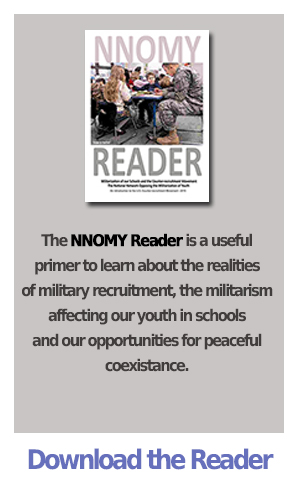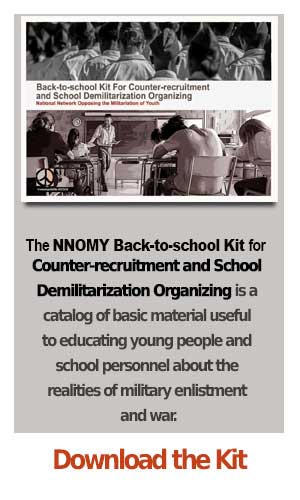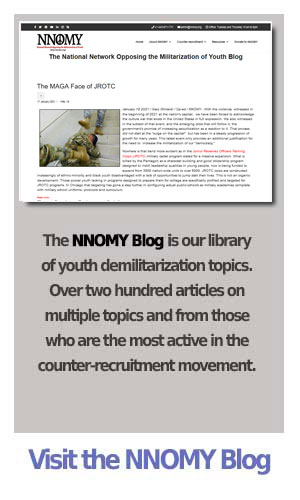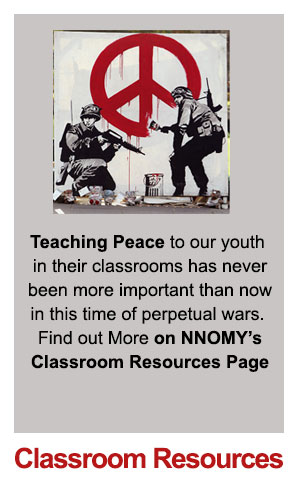Taylor Allen / Colorado Public Radio - The main source of light in this dim, warehouse-sized room in suburban Denver comes from rows of screens. Each panel shows fast-paced military action — camouflaged soldiers swarming a city or special operations forces securing a target.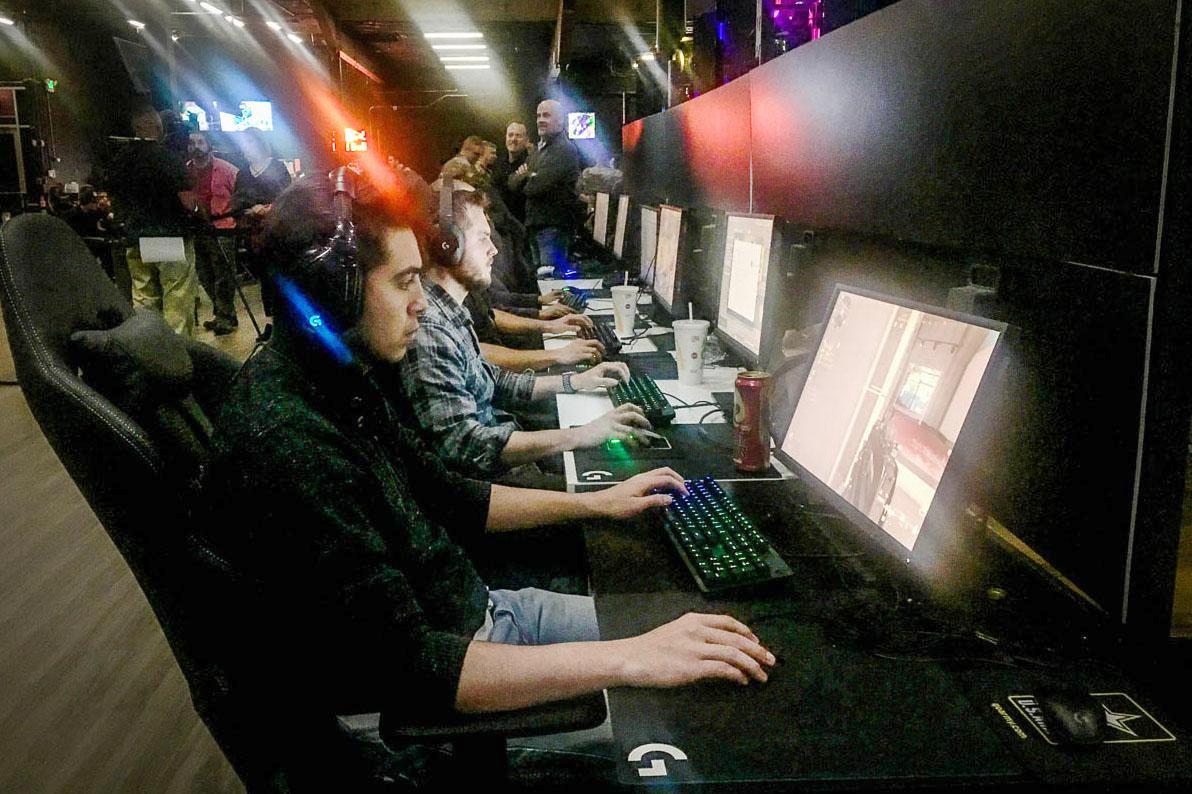 One of the figures hunched over a computer in the darkness huffs in disappointment.
One of the figures hunched over a computer in the darkness huffs in disappointment.
"I've died like four times in three missions," said 17-year-old Gavin Gains.
Even though he wasn't dominating the brand new "Call of Duty: Modern Warfare" game, Gains attracted the attention of the event's sponsors - the U.S. Army. The office held this release party for the new game at an esports venue called Localhost Arena. Anyone who came to the party was able to play the new game as long as he or she also spoke to Army recruiters.
"This is the targeted demographic - these young men and women that came out here to play the esports," said Sgt. Vincent Cruz, an Army recruiter.
The Army has turned to esports, along with other new marketing strategies, in an attempt to make military service more appealing to young people. Cruz says video games are a way for the Army to connect with more people. It has even created its own professional esports team, which has become part of Cruz's pitch.
Cruz said the military wants to, "Reach out to these men and women and show them that 'Hey, you can actually do this in the Army and get paid by the way.'" The Army calls its esports efforts "some of the highest lead-generating events in the history of the all-volunteer force."
The National Network Opposing the Militarization of Youth (NNOMY)
Articles
The 750 retired admirals, generals, and other top military leaders who are members of Mission: Readiness recognize that the strength of our country depends on a strong military. Since 2009, Mission: Readiness has championed evidence-based, bipartisan state and federal public policy solutions that are proven to prepare our youth for life and to be able to serve their nation in any way they choose.
OpEd: Gary David Ghirardi, National Network Opposing the Militarization of Youth - 
Mission: Readiness, a project ostensibly of the Pentagon, has just celebrated its tenth year of entering our nations preschools to promote the health and qualification of “children at risk” to be eligible to enter military service in fourteen years to fifteen years when they reach the age of legal military enlistment. This program, which is one of five components of The Council For a Strong America, is a bipartisan effort by supporting Democratic and Republican policy makers and retired military elites to shepherd these youth into productive outcomes in opposition to what is being represented as an epidemic of bad health, crime, drug addiction and sub-literacy.
Mission: Readiness, in its initial incarnation, posited that the state of American youth was a “national security issue,” meaning that enlistment aged youth, due to inadequate health, educational deficits, criminal records, and drug addiction, deprived the military of qualified candidates for military service. In subsequent years, the message was toned down to pose the issue as one of being “citizen ready” and now has morphed into five individual emphasized programs encompassing crime interdiction, military readiness, prepared workforce, physical preparedness and religious grounding, now being spearheaded by evangelicals to strengthen family and community ties.
Much of what is being expressed are ideas supportable aside from political or philosophical differences: We should want the best for our children and youth and want them to be healthy of mind and body and yet, coming from the perspective of peace communities, we need to ask and ultimately challenge, why should laudable goals be usurped by the Pentagon with its egregious history of national and international human rights violations and exposing its own soldiers to physical, social, and mental health threats?
“Debt is a form of social control. You can force people to do all kinds of things if you put them in debt first."
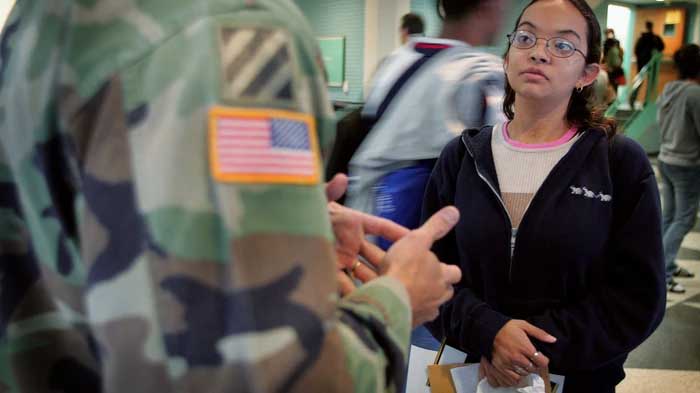 Leila Ettachfini / VICE - The U.S. Army has already achieved its recruiting goal this year, after falling short about 6,500 recruits in 2018. At the Pentagon this week, the head of Army Recruiting Command Maj. Gen. Frank Muth attributed the success to America’s crippling student debt crisis.
Leila Ettachfini / VICE - The U.S. Army has already achieved its recruiting goal this year, after falling short about 6,500 recruits in 2018. At the Pentagon this week, the head of Army Recruiting Command Maj. Gen. Frank Muth attributed the success to America’s crippling student debt crisis.
While the Department of Defense’s 2019 budget is $686 billion, that number is less than half of the collective student debt in America, which surpassed $1.5 trillion this year. “One of the national crises right now is student loans, so $31,000 is [about] the average,” Muth told reporters. “You can get out [of the Army] after four years, 100 percent paid for state college anywhere in the United States."
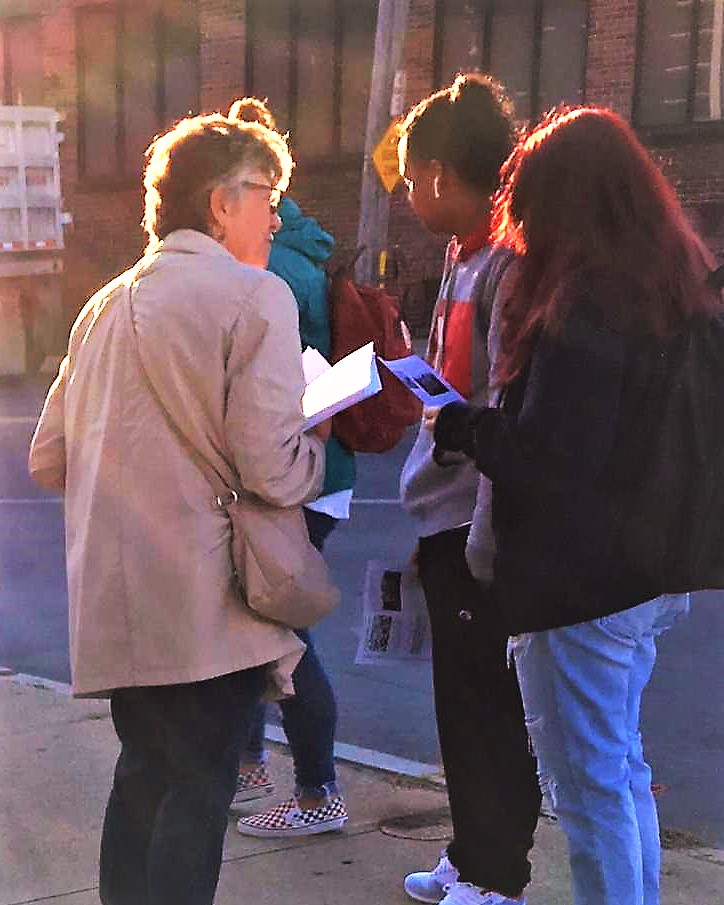 Bonnie J. Caracciolo, Chelsea Uniting Against the War (CUAW) - On September 9, 2019 members and supporters of Chelsea Uniting Against the War (CUAW) greeted students on their way to school. CUAW was there to inform students about their right to opt out from having their personal information given to military recruiters.
Bonnie J. Caracciolo, Chelsea Uniting Against the War (CUAW) - On September 9, 2019 members and supporters of Chelsea Uniting Against the War (CUAW) greeted students on their way to school. CUAW was there to inform students about their right to opt out from having their personal information given to military recruiters.
Since 2001 and the No Child Left Behind Act along with the 2002 National Defense Authorization Act- both which provided for the presence of military recruiters in middle- and high-schools - young people have become vulnerable targets.
The group distributed over 1000 leaflets describing the facts about military enlistment including information on homelessness among veterans along with other serious issues. One in ten homeless people in the US is a military veteran. (2019) Additionally, 150 opt out forms were handed out.
Chelsea High School is in a mostly immigrant, working-class neighborhood near Boston, MA. Current enrollment is 1,335 students in 9th through 12th grade.
Each of the activists spoke to several students who knew about the opt out forms and had already signed them.
Largest branch of military struggles in a strong economy; a pilot program in Chicago
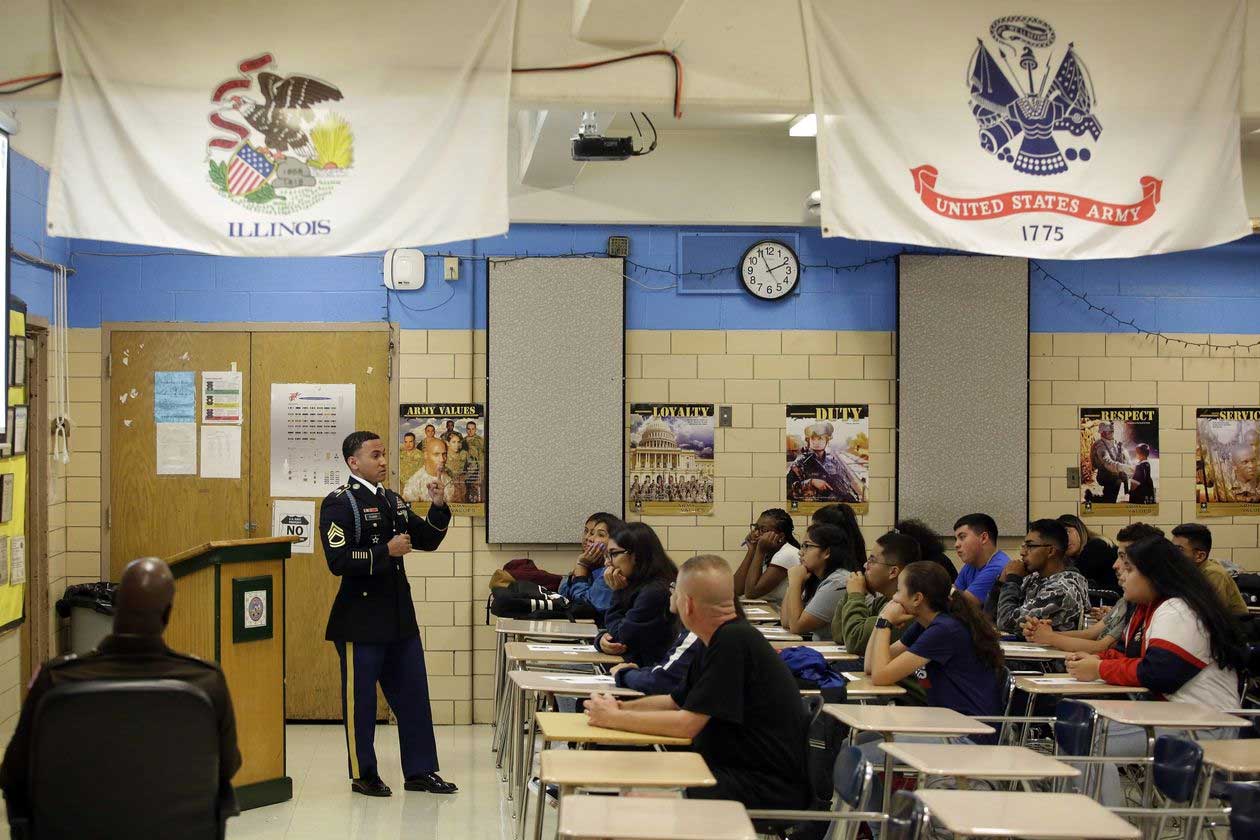 Ben Kesling, Wall Street Journal - CHICAGO —The U.S. Army is experimenting with new recruiting tactics as it struggles to connect with young people who have other job options in a strong economy.
Ben Kesling, Wall Street Journal - CHICAGO —The U.S. Army is experimenting with new recruiting tactics as it struggles to connect with young people who have other job options in a strong economy.
Last year the nation’s largest military branch recruited just under 70,000 troops, about 10% short of its target of 76,500, which marked the first time in a decade the Army missed its goal. For this fiscal year ending in September, they met a more-modest goal of 68,000.
Experts say the military’s appeal has been waning among young people, and a tight labor market is typically the toughest time to recruit.
In a pilot program in Chicago, the Army is tailoring its message by neighborhood, adjusting advertising and staffing to match an area’s demographics. The program here is part of a push into nearly two dozen cities where the Army has missed targets in the past. Across the country, the service is tapping into market data the way corporations or political campaigns might, and it is making sure recruiters are the first ones who get issued new eye-catching uniforms.
How Rory Fanning went from Army Ranger to war resister (and counter-recruiter).
 August 19, 2019 / Alex N. Press / Jacobin - In a high school classroom on the South Side of Chicago, Rory Fanning is telling students about the time he and his fellow Army Rangers occupied a school in Afghanistan. “We walked in and said, ‘School’s canceled, we’re going to use this as a military base for the next six weeks.’ There was nothing they could do about it.”
August 19, 2019 / Alex N. Press / Jacobin - In a high school classroom on the South Side of Chicago, Rory Fanning is telling students about the time he and his fellow Army Rangers occupied a school in Afghanistan. “We walked in and said, ‘School’s canceled, we’re going to use this as a military base for the next six weeks.’ There was nothing they could do about it.”
Sometimes, after abducting locals for reasons as thin as not showing enough deference to soldiers, his superiors would place their detainees in separate classrooms and fire a gun somewhere out of sight so that each detainee would think the other had been shot. At that point, says Fanning, “We’d walk into the rooms where each person was and say, ‘Your friend didn’t tell us what we wanted to hear. Do you have anything we want to hear?’ This is how we got information. These are things I watched.”
It’s June 2019; the so-called War on Terror has been going on since before any of the students in the room were born. Fanning is presenting his story — how he went from volunteer enlistee to conscientious objector — to three classes this morning. He’s doing what’s known as “counter-recruitment.” The US military spends more than a billion dollars a year to draw enlistees to what has been, since 1973, an all-volunteer force. The gigantic institution employs around ten thousand recruiters, and thanks to the No Child Left Behind Act, they receive the same access to students as college recruiters. The odds are certainly not in Fanning’s favor.
Rather than finger-wagging to teenagers, telling them they cannot enlist, Fanning insists he simply wants them to know what they’re signing up for. After all, as he tells the class, the military is no regular job — if you try to quit, you can be sent to jail, or, at least historically, killed (“Your manager at Pizza Hut certainly doesn’t have that kind of power,” he says). His aim is to fill in the parts of the military experience that go unmentioned by recruiters — such as the fact that most of those killed in war are civilians, and that unlike Call of Duty, you can never turn off your memories of war.
The school we’re in has a particularly active Junior Reserve Officers’ Training Corps (JROTC) program, and men in uniform pass by in the hall between class periods as Fanning hangs back, talking with the teacher who invited him to speak today. The military emphasizes JROTC’s role in “character development” rather than as a recruiting vehicle, but almost half of JROTC cadets go on to enlist.
Fanning enlisted in the Army Rangers shortly after 9/11 — the Rangers were having a particularly good year thanks to Ridley Scott’s Black Hawk Down, a film depicting the regiment bloodletting in the Battle of Mogadishu. He had recently finished college and felt it wasn’t right that eighteen-year-olds, barely adults, were going to be the ones signing up to fight. Plus, he tells the class, he wanted to “prevent another 9/11.”
Despite Fanning’s desire to do good in the world — and maybe have his student debt paid off, too — it didn’t take long for him to come to a different view of the military. “I was expecting bullets to be whizzing by my head when I landed in Afghanistan,” he tells the students, “but when the sun came up the next day, all I saw was unbelievable amounts of poverty. I felt like a bully.”


